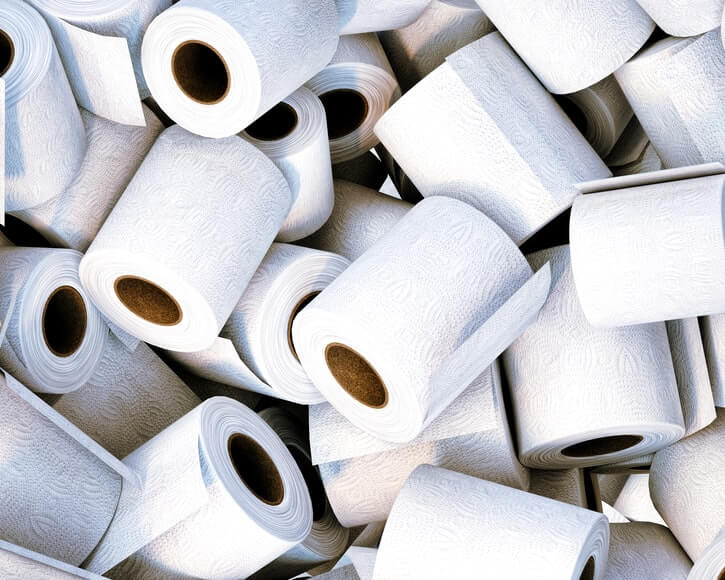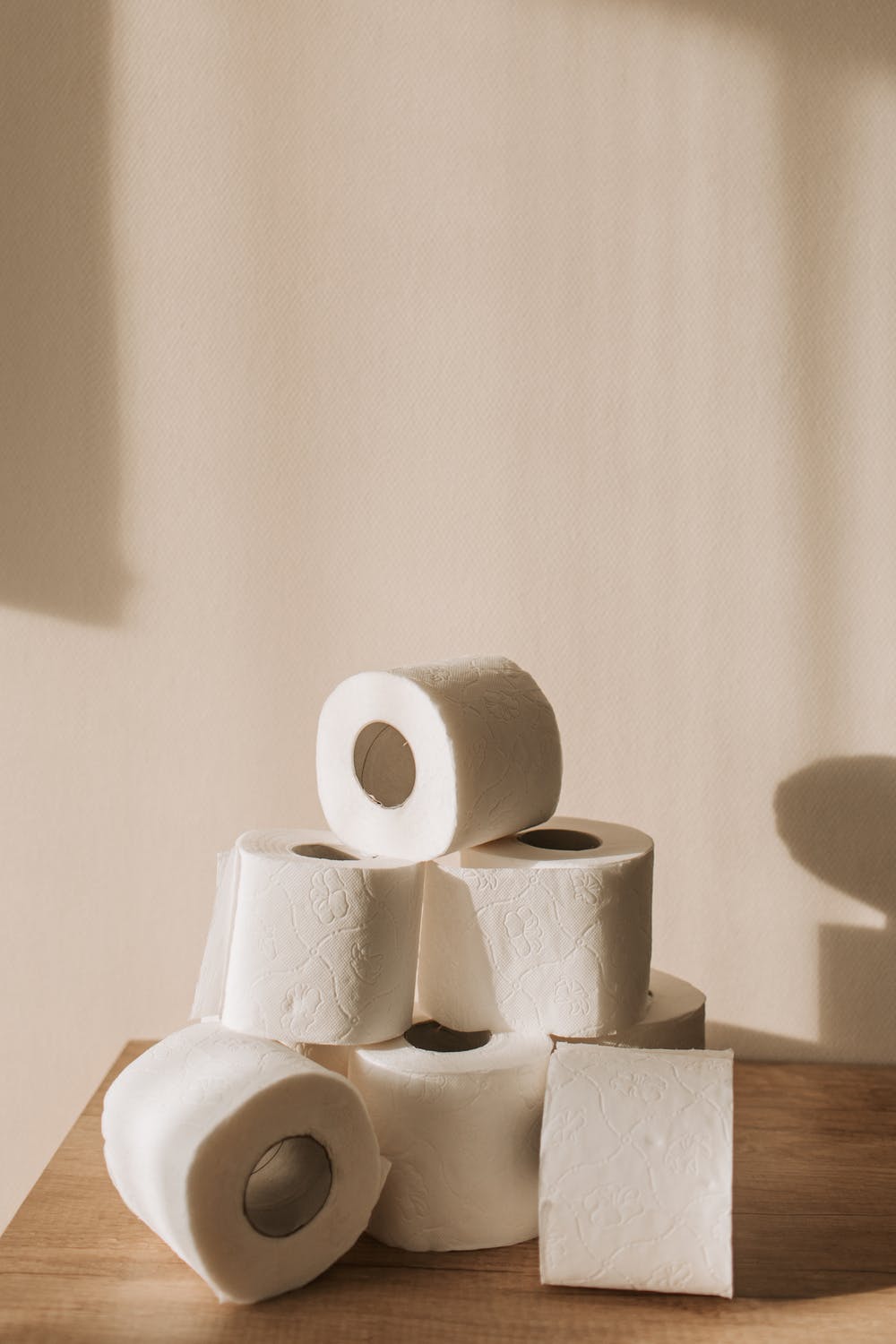
Why is Toilet Paper So Dusty? (Eliminate it in 5 Steps)
Cleaners Talk is reader-supported. This post contains affiliate links, we may earn a commission at no additional costs to you. As an Amazon Associate we earn from qualifying purchases.
In the manufacturing process, brands cut down long tree pulp fibers to make smaller pieces that will stick together. If the fibers remain long, they won’t disintegrate in the sewage system and clog pipes and septic tanks. Some fibers also never bond to each other, so when you open a new roll or unwind a roll, pieces of lint fall off and create dust in your bathroom.
While it sounds like smaller toilet paper fibers are preferable to longer ones that can clog your pipes, the smaller fibers are the ones creating the dust. When you rip off a square of toilet paper, some smaller fibers get torn free and float around like dust.
There are three types of dust:
- Inhalable dust’s diameter is under 100 microns and gets trapped in your nasal passages
- Thoracic dust has a diameter of fewer than 25 microns and reaches your bronchi
- Respirable dust’s diameter is less than 10 microns and can make its way to your lungs
Toilet paper fibers rip off to get so small, they’re categorized as respirable dust, making them one of the most dangerous types of dust in your home. Because they slip past the mucus in your nose and make their way through your windpipes, these particles take up residence in your lungs.
How Much Toilet Paper Dust Do You Inhale?

There aren’t any studies tracking how much toilet paper dust the average person inhales. You’re most likely not breathing in enough dust to harm your lungs unless you never clean your bathroom and let the toilet paper dust pile up.
However, for people with allergies, asthma, or other respiratory issues, breathing small amounts of toilet paper can still irritate their throats and trigger a coughing fit.
The amount of dust toilet paper creates isn’t the biggest problem. The chemicals used to bleach toilet paper are present in the dust and can irritate your body systems once inhaled. Knowing what’s in your toilet paper can help you realize how problematic its dust can be.
Is Toilet Paper Dust Bad for You?
Yes, toilet paper dust is bad for you just as any dust is harmful to breathe in. You can see how dust collects on surfaces in your house—now picture that in your lungs. While there’s no direct correlation showing that dust causes asthma, it does get caught in your lungs and can make you sick or cause trouble with your breathing.
Dust isn’t clean, so if you inhale dust and have abrasions in your lungs or airways, the dust can cause bacterial infections. Even if the dust stays captured in your nose, it can cause nose bleeds and coughing or sneezing fits.
How to Eliminate Toilet Paper Dust
The best way to prevent toilet paper dust is to keep your rolls covered. Many manufacturers individually wrap each roll. If your preferred brand doesn’t do this, you can keep it in a closed cabinet or a toilet paper roll cover.
If you’re worried that your toilet paper has dust on it from another source, you can unroll the first few squares and throw them away. Then you know you’re using paper that has a protective covering over it.
There are other ways to cut down on toilet paper dust and try to eliminate it from your bathroom. Consider these methods if you’re worried about how much toilet paper dust you’re inhaling.
1. Buy High-Quality Toilet Paper
Most commercial toilet paper has perforations when you buy it. This means the manufacturers have already torn holes in the paper and eliminated some of the dust. When you rip off a square, you’ll get less dust than if you had to tear across the entire width of the roll.
High-quality toilet paper has perforations too, but buying two- or three-ply options produces less dust than the cheaper one-ply rolls. Since the fibers in the toilet paper aren’t as brittle, they produce less dust when you tear them.
2. Turn on the Fan
If your bathroom has a fan to eliminate moisture and humidity from the air, you can also run it while you’re using the bathroom and tearing off sheets of toilet paper. Just as the fan pulls humidity from the air, it can eliminate dust particles as well.
3. Vacuum, Don’t Sweep
Using a vacuum to clean your bathroom more efficiently sucks up the dust particles when compared to sweeping. Using a broom agitates the particles so they fly back into the air and have another chance to enter your lungs. The dust can also remain stuck in the broom’s bristles and get released later, or in another area of the house.
4. Clean with a Damp Cloth
After you vacuum the bathroom, you can clean all surfaces with a damp cloth to remove even more dust. Just in case your cleaning kicked up the dust particles, the damp cloth will grab them. You can wipe down the most-used surfaces every day, and use a damp cloth on the walls, window sills, and shelves when you clean the entire bathroom.
5. Use a Bidet
If spending more money on better toilet paper will break your budget and you don’t have the time to clean to the extent of eliminating so much dust, you can switch to a bidet. A bidet is a toilet that uses water to clean instead of needing to wipe with toilet paper.
You’ll have to spend some money upfront to install a bidet in your bathroom, or even to buy an attachment for your toilet. But it pays off in the long run because you won’t spend so much money on toilet paper and your bathroom air will be cleaner.
Final Notes
You might notice dust in your bathroom without realizing where it’s coming from. After all, dust accumulates in every room of your house. But toilet paper dust in your bathroom contains different chemicals than other dust, and the particles are small enough to travel to your lungs.
Understanding toilet paper dust and taking steps to keep your air cleaner can help your respiratory system. Instead of having dust coat your nose, airways, and lungs, you’ll see less dust on bathroom surfaces and have cleaner air.
Related articles:
